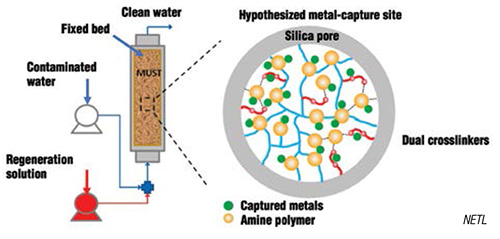Cost-effective sorbent for metal removal from wastewater

At the 2024 Spring Meeting of the American Institute of Chemical Engineers (AIChE), a team from the National Energy Technology Laboratory (NETL) presented a newly patented technology for removing critical and heavy metals from wastewater. This innovative technology, known as Multi-Functional Sorbent Technology (MUST), consists of an epoxy-amine crosslinked polymer network immobilized within the pores of a silica support.
NETL researcher McMahan Gray explains that MUST surpasses activated carbon, a commonly used sorbent, in its ability to bind metals more effectively and selectively target specific metals. Additionally, MUST offers a simple, one-pot preparation method that can be easily scaled and regenerated. The cost of MUST is around 0 per cubic foot, making it more cost-effective compared to competing technologies that may range from 0-0 per cubic foot.
The production of MUST involves wet impregnation, where silica particles are suspended in a solution of amine, crosslinkers, and solvent. After a series of steps involving vacuum and heating, a dry, granular sorbent is produced in just one hour.
MUST has already been successfully used for the recovery of rare-earth elements and for the removal of metals like lead and manganese from various sources of water. The technology was initially developed for fossil-related wastewaters but has shown effectiveness in treating a wide range of contaminants including synthetic dyes and per- and polyfluoroalkyl substances (PFAS).
The next phase for MUST involves exploring potential commercial partnerships for cleaning industrial-effluent waste streams, highlighting the versatility and potential impact of this advanced technology in addressing water pollution challenges.



